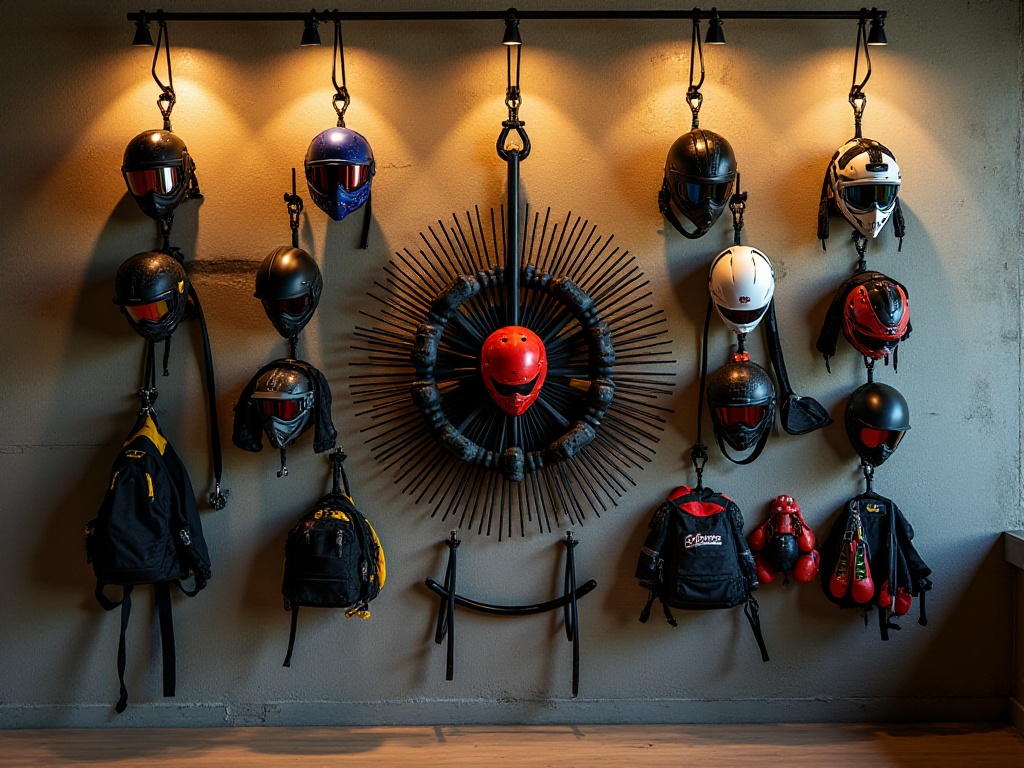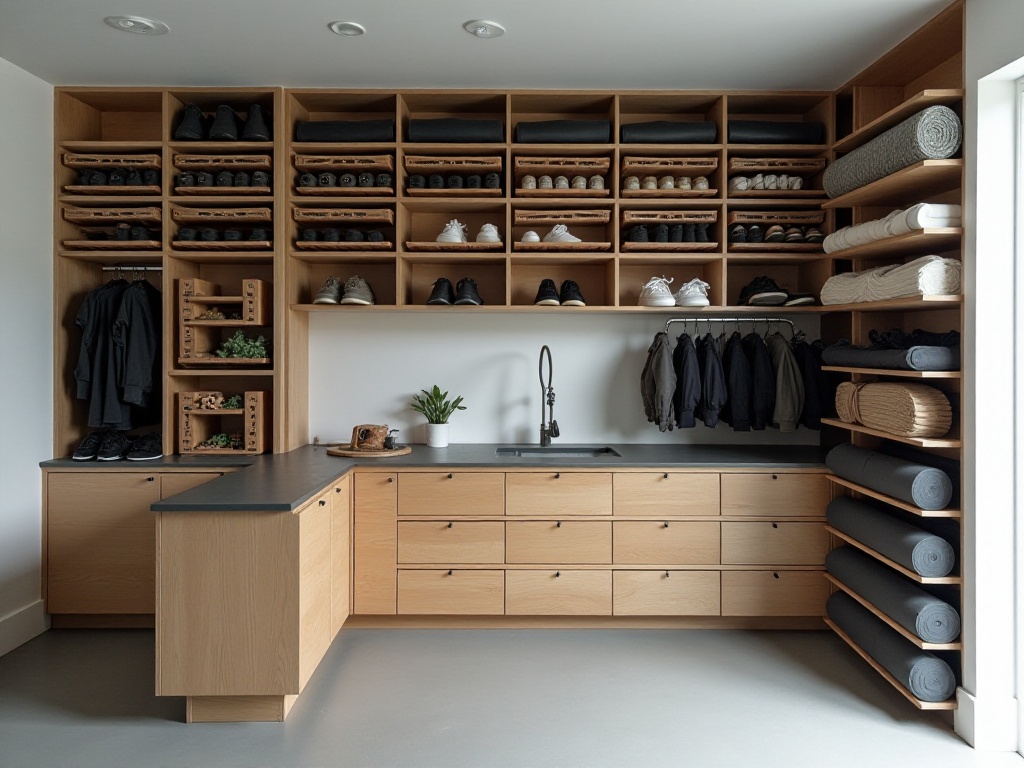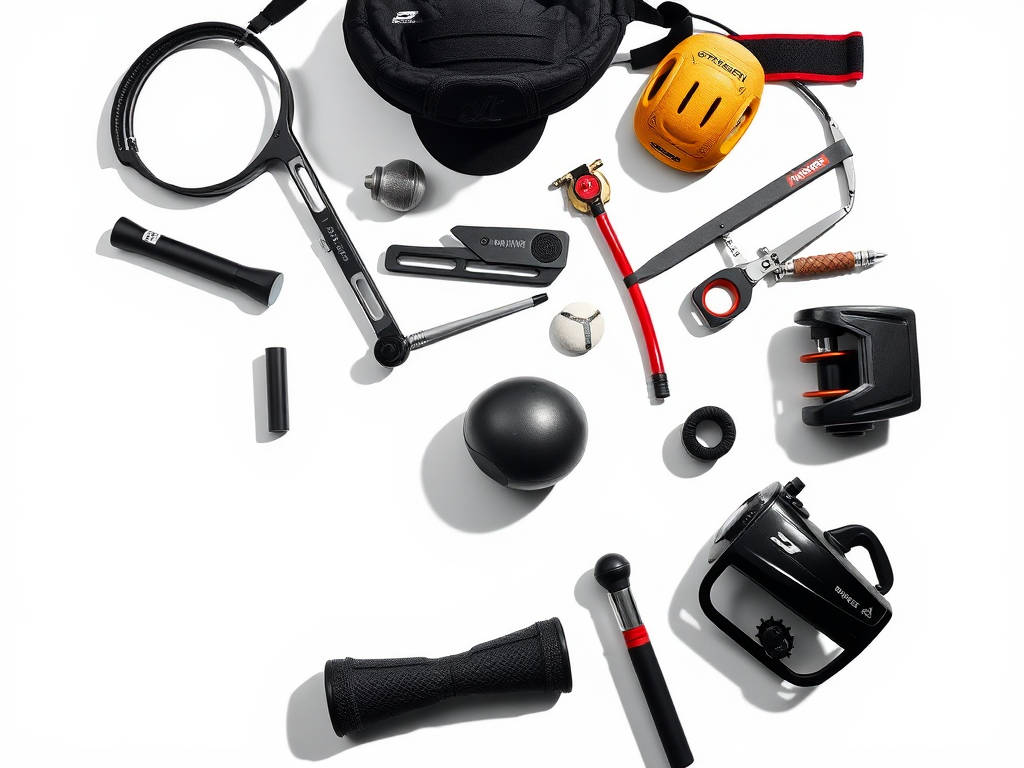Introduction
As a fitness fanatic, I deeply understand the frustration of not being able to find workout equipment. Especially when you've planned to work out with friends, but end up spending half the day rummaging through everything to find your gear. What's even more frustrating is finding equipment that's moldy and covered in dust when you finally discover it in a corner! This painful experience made me determined to properly organize my fitness equipment. After long-term practice and exploration, I finally found a super practical storage solution that I'd like to share with everyone today.
Space Planning
First, we need a major cleanup. I remember the first time I took out all my workout equipment - I was absolutely shocked. Various types of running shoes, basketball shoes, several yoga mats, dumbbells of different sizes, resistance bands, and I even found an ab wheel from three years ago (God, I forgot I had that thing). That scene, honestly, left me stunned.
Through this big inventory check, I realized I needed to analyze the usage frequency of these items in detail. For example, equipment I use at least three times a week, like my favorite running shoes, regular workout clothes, and yoga mat, must be kept within easy reach. Equipment I use once or twice a month, like hiking poles and camping gear, can be stored a bit further away. As for special equipment that might only be used once a year, like ski gear, that can go into storage.
I also discovered that many items no longer suited me. For instance, those heavy dumbbells I bought before don't really match my current training needs, and some workout clothes I've never worn due to size issues. Rather than letting these things take up space, it's better to pass them on to someone who needs them more.
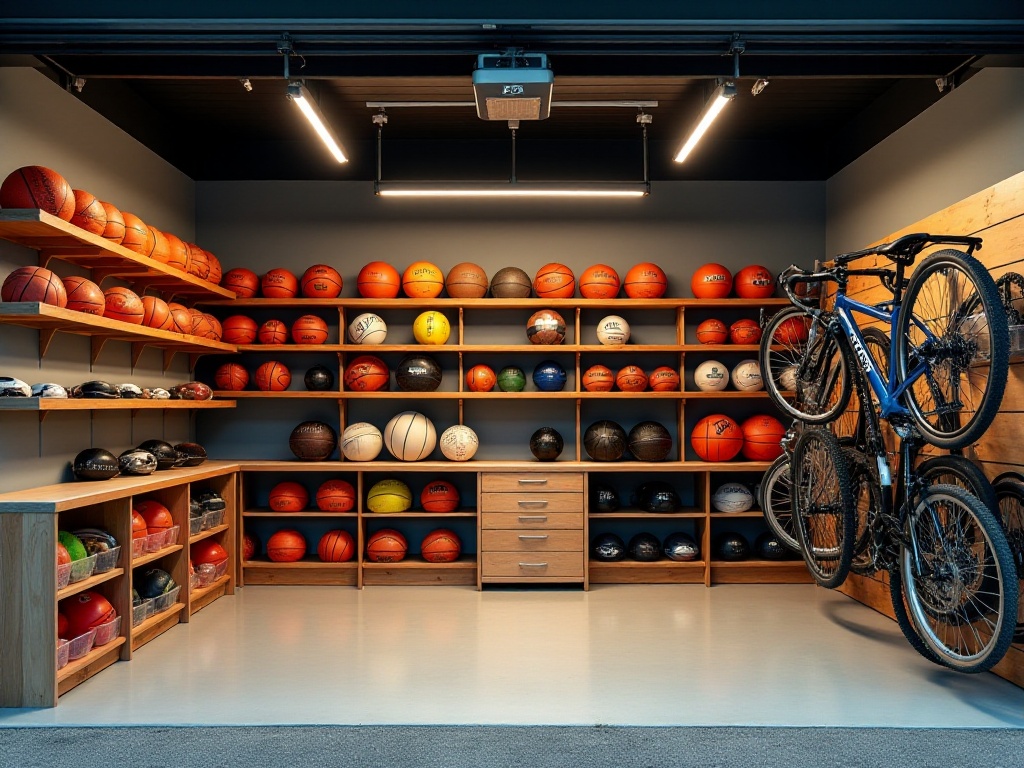
Garage Storage
Speaking of storage space, my garage is an absolute treasure trove. I spent a weekend building a super practical storage tower system. I bought all the materials from the building materials market for less than $500, but the result is amazing!
I designed the tower with five levels, each with adjustable height. On the bottom level, I placed heavy equipment like adjustable dumbbell sets and kettlebells. The second level is my yoga equipment zone, with yoga mats, blocks, and foam rollers all neatly arranged. The third level is for various sports balls, using different colored storage boxes for categorization: red boxes for basketballs and soccer balls, blue boxes for badminton and tennis equipment, and yellow boxes specifically for small accessories like air pumps and ball needles.
The fourth level is planned as an "accessories zone" for sports protective gear, wrist guards, and sports towels. I labeled each storage box, making items very easy to retrieve. The top level is for backup sports equipment, like spare running shoes and workout clothes.
On the side of the tower, I installed several hooks specifically for hanging sports bags and training ropes. This way, even irregularly shaped items have their own dedicated spots.
Wall System
The coolest design in my garage has to be my "equipment display wall"! This wall is like an art exhibition for sports equipment, with every item perfectly displayed like artwork.
I installed a complete track-based storage system on the wall, allowing free combination of various hooks and shelves as needed. Tennis and badminton rackets have dedicated hangers, while resistance bands and pulley systems each have their own hooks. I particularly love this hanging storage method - it not only keeps equipment in optimal condition but also looks incredibly stylish.
On the lower half of the wall, I installed several foldable shelves. They can be folded to save space when not in use and expanded when needed to hold temporary equipment. This design is especially useful during home workouts, as I can lay out all the equipment I need for the day and put it back immediately after use.
To make the storage system more user-friendly, I labeled every storage position. This makes it convenient not only for me but also helps other family members know exactly where things belong. I used different colored labels to distinguish different types of equipment: red for strength training equipment, blue for cardio equipment, and yellow for accessories.
Ceiling Space
Honestly, I think ceiling space is a treasure trove in the storage world. Most people ignore this "aerial territory," but I won't miss any usable space.
I installed two sets of sliding rail storage systems on the garage ceiling. The biggest advantage of this system is that I can adjust stored equipment according to seasons. For example, now that it's summer, I've stored all the winter equipment like ski gear and snow boots in ceiling storage boxes. When winter comes, I'll store the summer equipment like surfboards and diving gear.
This rail system is really practical - just pull gently and the storage box slides down, making it very convenient to access items. And because it's a suspended design, it doesn't take up any floor space, making the floor look particularly neat. I also attached detailed inventory lists to the outside of each storage box, so I don't need to open them to check what's inside.
It's particularly important to note the weight limit when installing ceiling storage systems. I specifically chose lightweight storage boxes for storing equipment that's large in volume but light in weight. For heavy equipment, it's still safer to keep it on the ground-level storage racks.
Special Equipment
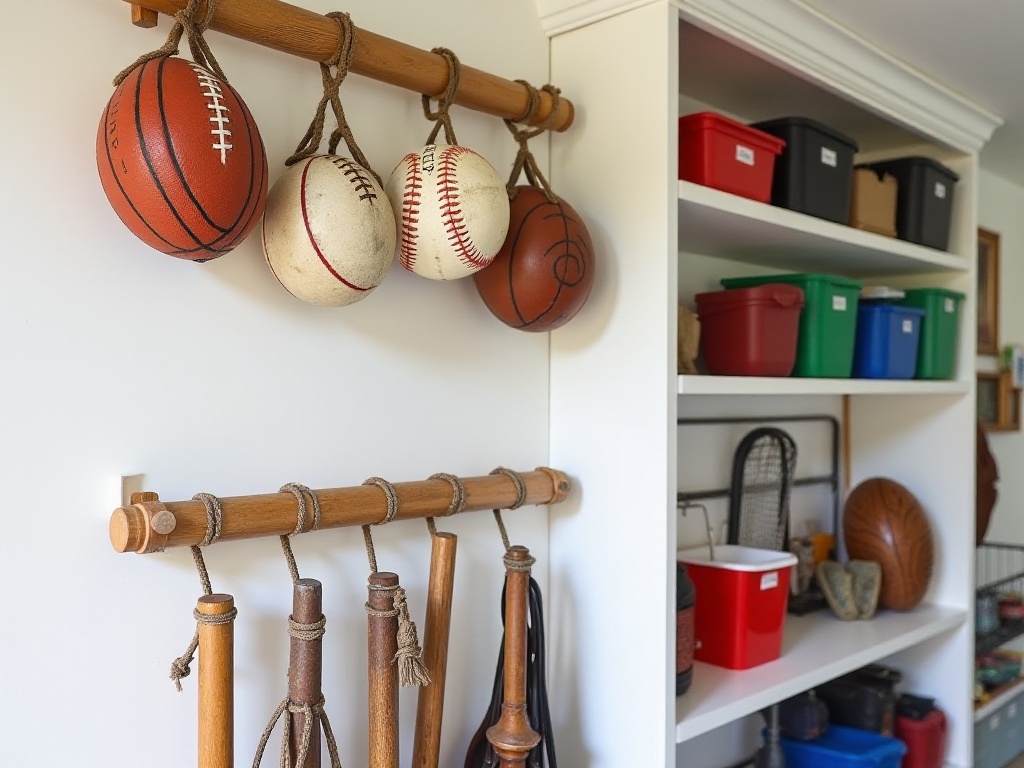
Bicycle Storage
Speaking of bicycle storage, this is a topic I've researched for a long time. Since I have two bikes, one road bike and one mountain bike, figuring out how to store them in a space-efficient yet accessible way really gave me a headache.
Finally, I chose an adjustable wall-mounted bike rack. The best thing about this rack is that its angle can be adjusted to accommodate different bike models. It also features a special anti-scratch design that won't damage the bikes' paint.
I installed a small tool rack next to the bike rack specifically for storing bike pumps, wrenches, and Allen keys - essential bike maintenance tools. This way, all tools are within easy reach when checking the bikes before riding.
To prevent tire deformation, I specifically raised the bikes slightly so the rear wheels are slightly suspended. I also regularly check tire pressure to ensure the bikes stay in optimal condition. Under the bikes, I placed a dust cover that can be used when the bikes aren't being ridden to prevent dust accumulation.
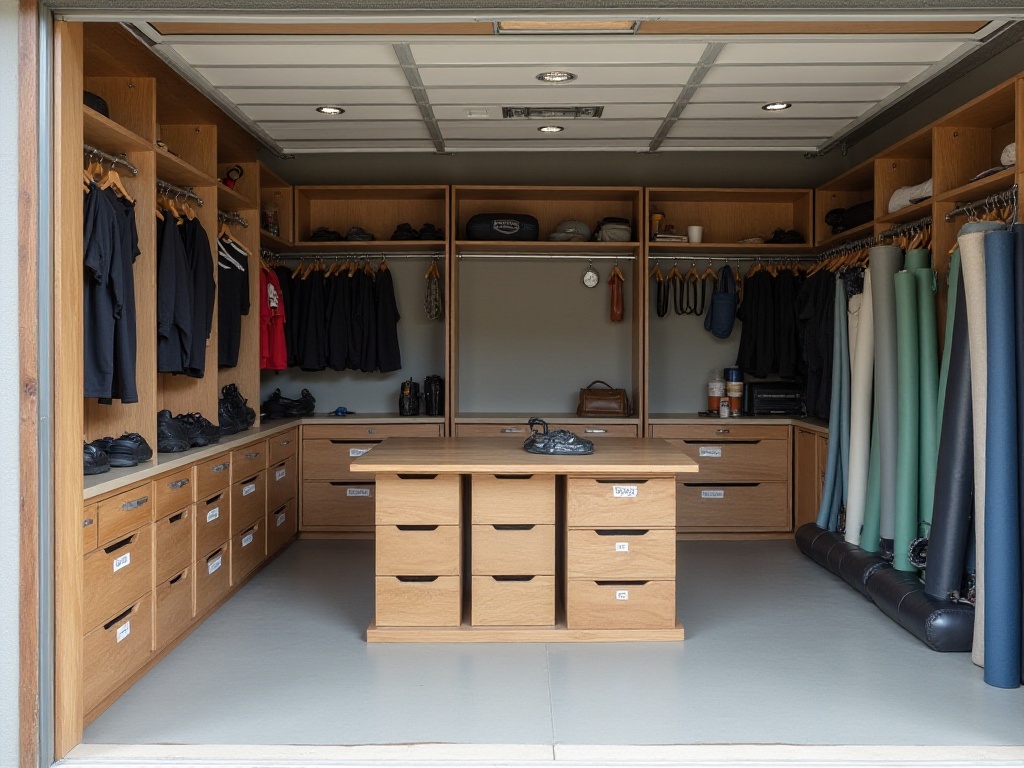
Ball Storage
For storing various ball equipment, I racked my brains and came up with a perfect solution. First, I used several PVC pipes and some hardware accessories to make a vertical ball storage rack. This rack's design is particularly clever, with each ball having its own independent groove that prevents balls from pressing against each other while maintaining appropriate pressure.
To perfectly store balls of different sizes, I designed grooves of various sizes. Basketballs and soccer balls go in the larger slots at the bottom, while volleyballs and tennis balls go in the smaller slots at the top. Each groove is slightly tilted to prevent balls from rolling out while remaining easy to retrieve.
On the side of the rack, I added a small mesh pouch specifically for storing air pumps and various ball needles. This way, when you find a ball needs more air, you can immediately inflate it - super convenient.

Daily Maintenance
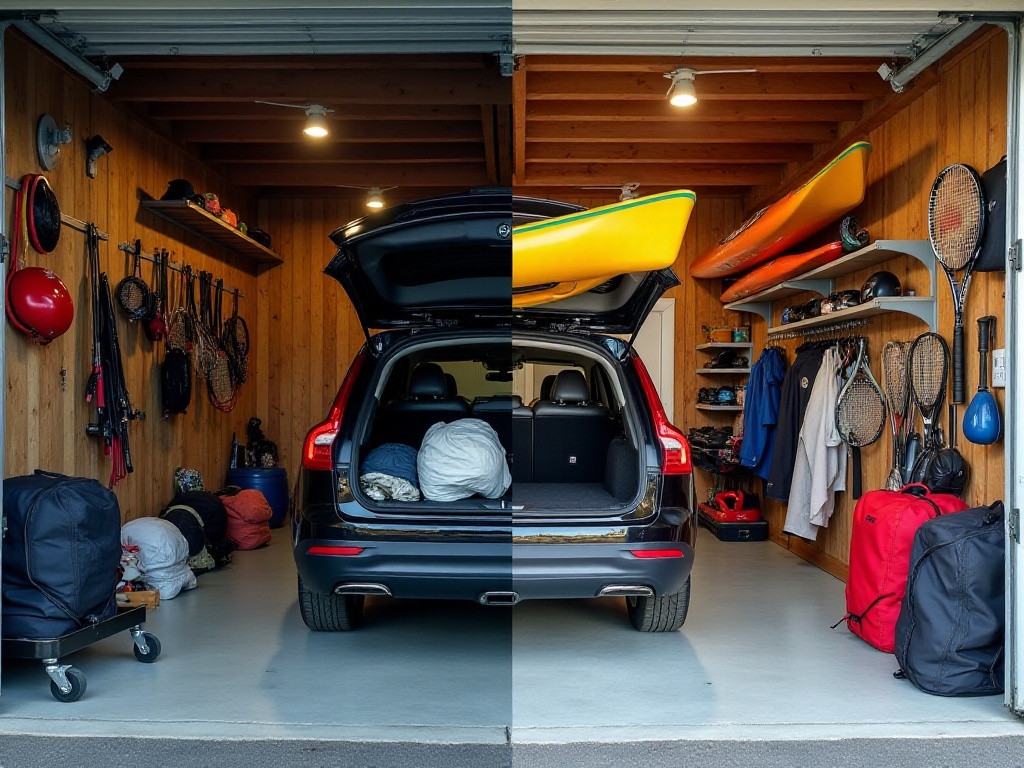
Cleaning and Care
Honestly, just storing equipment properly isn't enough - regular cleaning and maintenance are key to extending equipment life. Through long-term practice, I've developed a complete maintenance plan.
After each workout, I wipe down equipment surfaces with special cleaners. For equipment that easily gets sweaty, like yoga mats and resistance bands, I make sure they're completely dry before storing them. I also use disinfectant spray to give them a quick sanitization, which not only keeps them clean but also prevents odors.
Every weekend, I spend some time checking the storage status of all equipment. I make sure everything is in its proper place and see if any equipment needs position adjustment. This habit may seem simple, but it's particularly important for maintaining the long-term operation of the storage system.
At the end of each month, I conduct a more thorough cleaning. I take out all equipment and carefully check for any damage that needs repair. For precision equipment, like the mechanical parts of adjustable dumbbells, I pay special attention to whether they need oiling maintenance.
Every quarter, I do a major cleanup. This isn't just about cleaning equipment - it's also about seriously considering whether each piece of equipment is still necessary. If I find equipment that hasn't been used for a long time or no longer suits current training needs, I consider giving it to others who might need it.
Moisture and Mold Prevention
In my storage experience, the biggest enemy is moisture. Especially during the rainy season, if you're not careful about moisture prevention, you'll easily find equipment getting moldy or rusty.
To solve this problem, I placed desiccants in each storage area. However, it's important to note that desiccants need to be replaced regularly - I usually replace them every three months. In some sealed storage boxes, I use reusable dehumidification boxes that can be heated and reused after they're full, which is particularly environmentally friendly.
For equipment that's especially prone to moisture, like leather boxing gloves, I first wipe them with a dry towel after use, then let them air dry before storing them. At the bottom of storage boxes, I also placed a layer of bamboo charcoal bags, which not only absorb moisture but also eliminate odors.
In the corner of the garage, I placed a small dehumidifier. Although this investment might seem big, I think it's worth it considering how many valuable pieces of sports equipment it protects. Especially during the rainy season, the dehumidifier runs almost 24 hours a day to ensure the entire storage space maintains an appropriate humidity level.
Conclusion
Honestly, establishing a comprehensive sports equipment storage system does require some time and effort, but it's definitely a worthwhile investment. Now whenever I want to work out, all equipment is neatly arranged and easy to find - this feeling is really great!
Moreover, a well-organized storage space really increases motivation for exercise. Every time I walk into the garage and see that neatly arranged equipment, it makes me want to start working out right away. This might be what they call "environment-driven behavior"!
If you have any unique storage tips, feel free to share them in the comments. Let's create a more professional and organized workout space together!
Related articles


